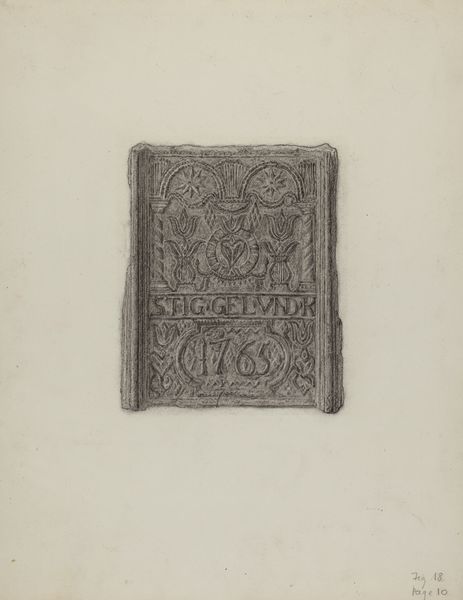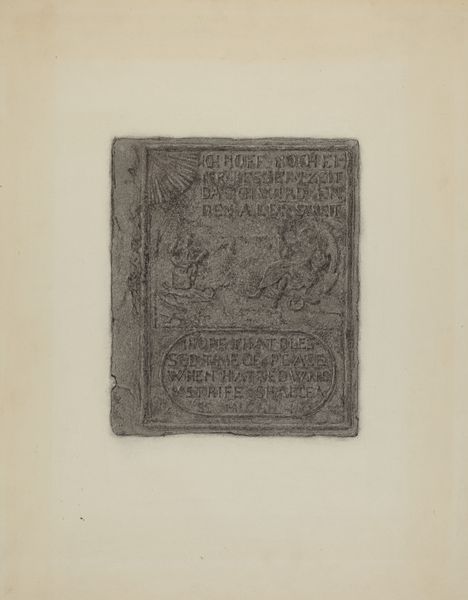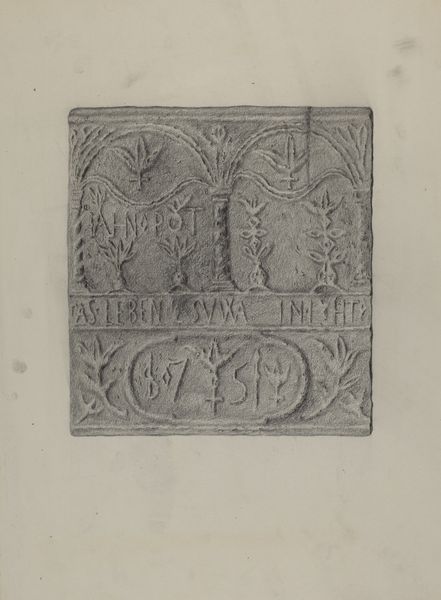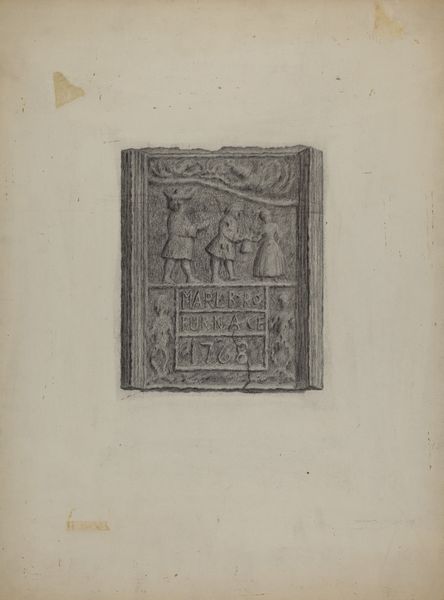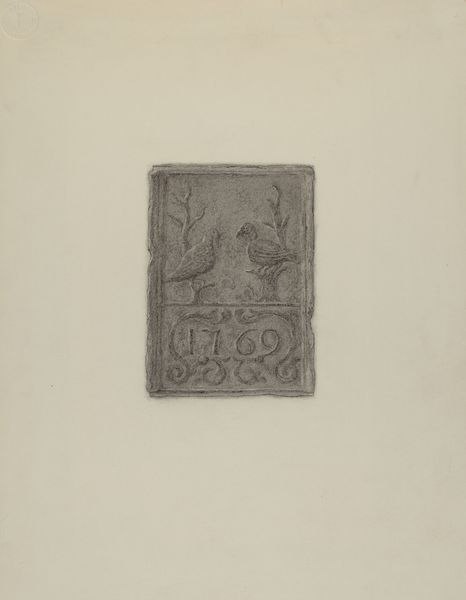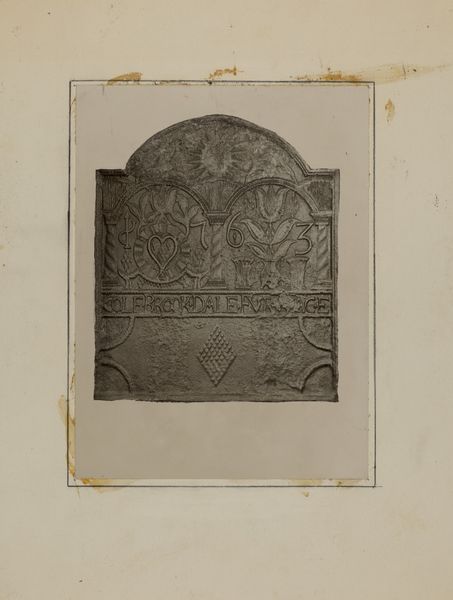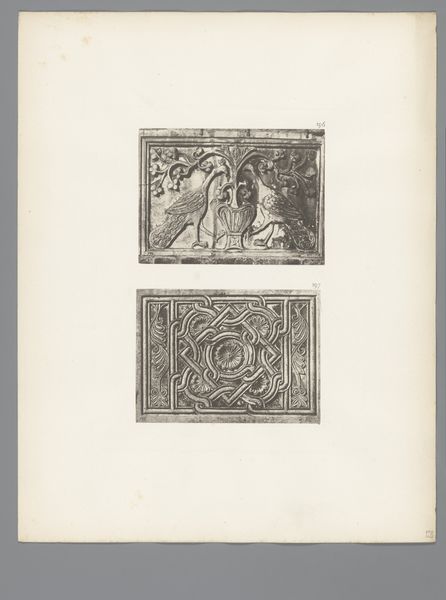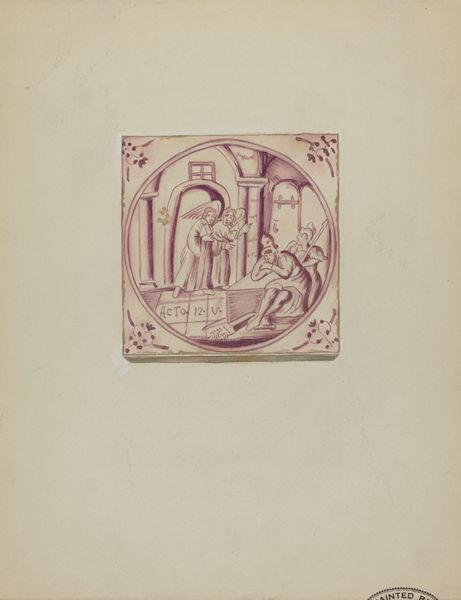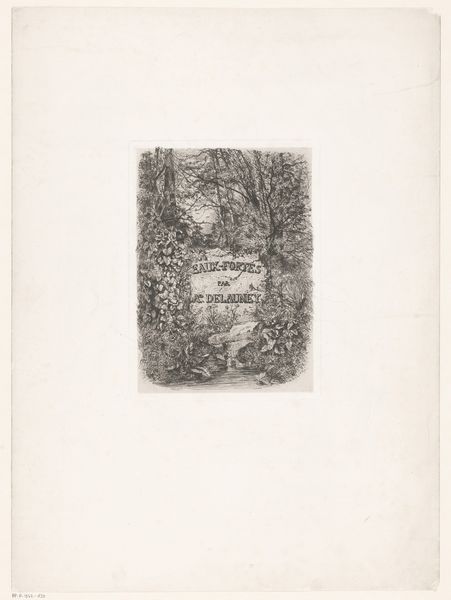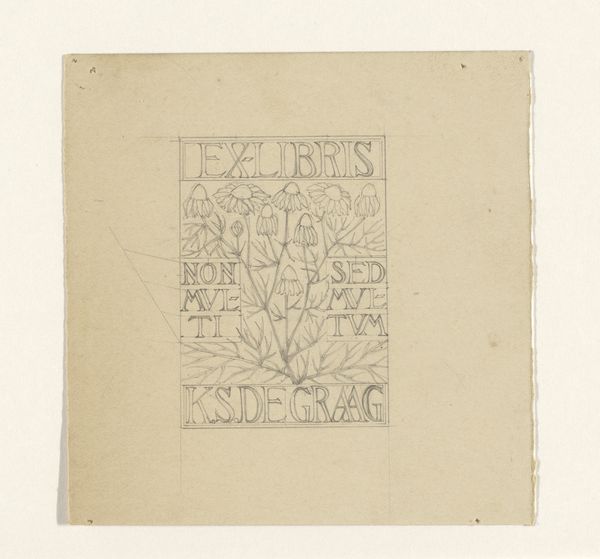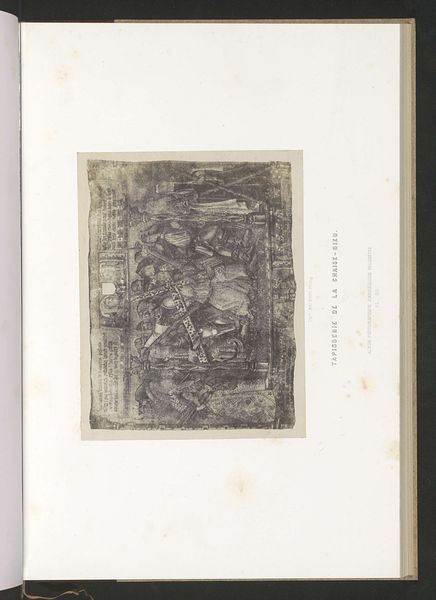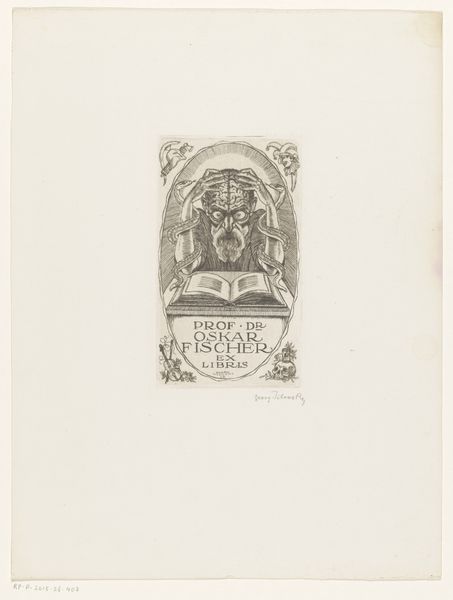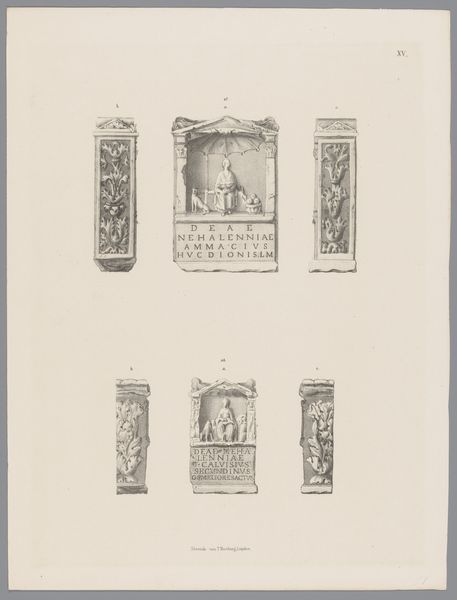
drawing, dry-media, pencil, graphite
#
pencil drawn
#
drawing
#
aged paper
#
toned paper
#
light pencil work
#
pencil sketch
#
old engraving style
#
dry-media
#
pencil drawing
#
folk-art
#
pen-ink sketch
#
pencil
#
graphite
#
pencil work
#
tonal art
Dimensions: overall: 35.5 x 27.8 cm (14 x 10 15/16 in.) Original IAD Object: 26" high; 24" wide
Copyright: National Gallery of Art: CC0 1.0
Curator: Here we have "Pa. German Stove Plate," a graphite drawing made around 1936 by Elmer G. Anderson. What catches your eye first? Editor: The texture! It looks almost like an old engraving. Is this paper particularly toothy? Curator: Actually, this drawing is on what looks like toned or aged paper. I see Anderson rendered this stove plate in great detail. It seems he focused on replicating the textures and the lettering... Editor: It is the textures! The slight unevenness along the top edge. And how meticulously he's captured what appear to be floral and heart motifs in the ironwork. Makes you wonder about the accessibility of stoves during that period, eh? The labor that went into both creating and depicting it. Curator: Yes, stove plates were common in Pennsylvania German homes. Beyond their functional aspect, the imagery reflected the family’s values—fertility, love, and so on. Look at those tulips— bursting with life, quite a contrast with the hardness of the cast iron. Editor: I imagine many hours huddled around it to survive the winter. Interesting, because this drawing must have been much less work and resources intensive... Curator: Very much so, Anderson’s approach speaks volumes. It's not just about recording what he saw but perhaps imbuing a familiar object with renewed significance, with nostalgia. Each stroke adds to its story. The aged paper complements that effect, as though the drawing itself has aged alongside the stove plate it represents. Editor: Makes me ponder on function, obsolescence, decoration. It would be really cool if the artist took images of objects and tried to "reproduce" them in simpler mediums to see if this influences the market or labor practices, but hey, it’s art. Curator: I feel this work bridges history with the personal. It's like whispering a tale across generations. It speaks of hearth and home, doesn't it? Editor: Yes, definitely. Thanks to Anderson, what started off functional is now something we can really ruminate about and discuss from different perspectives, which might have been quite less available during the period the subject of this work was popular!
Comments
No comments
Be the first to comment and join the conversation on the ultimate creative platform.
